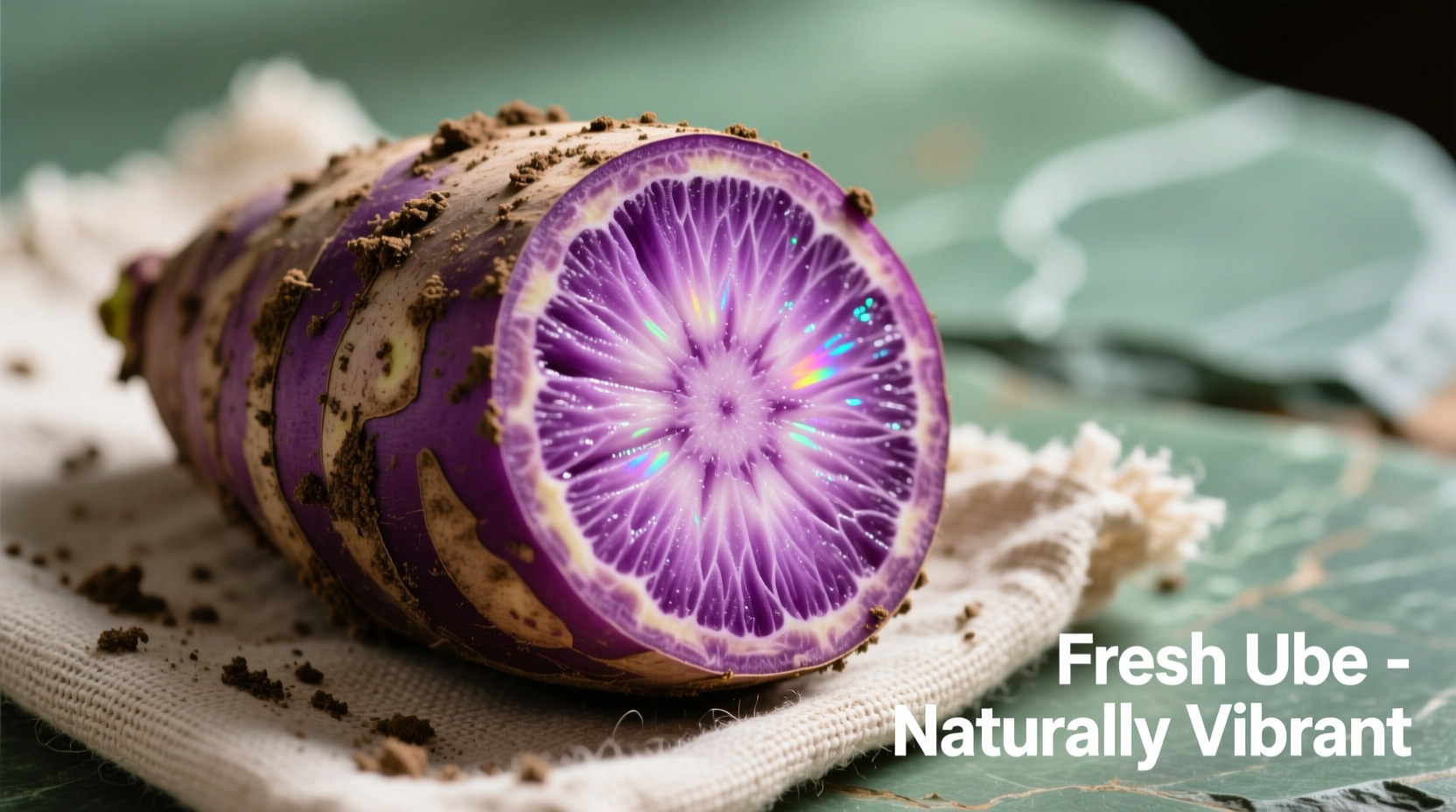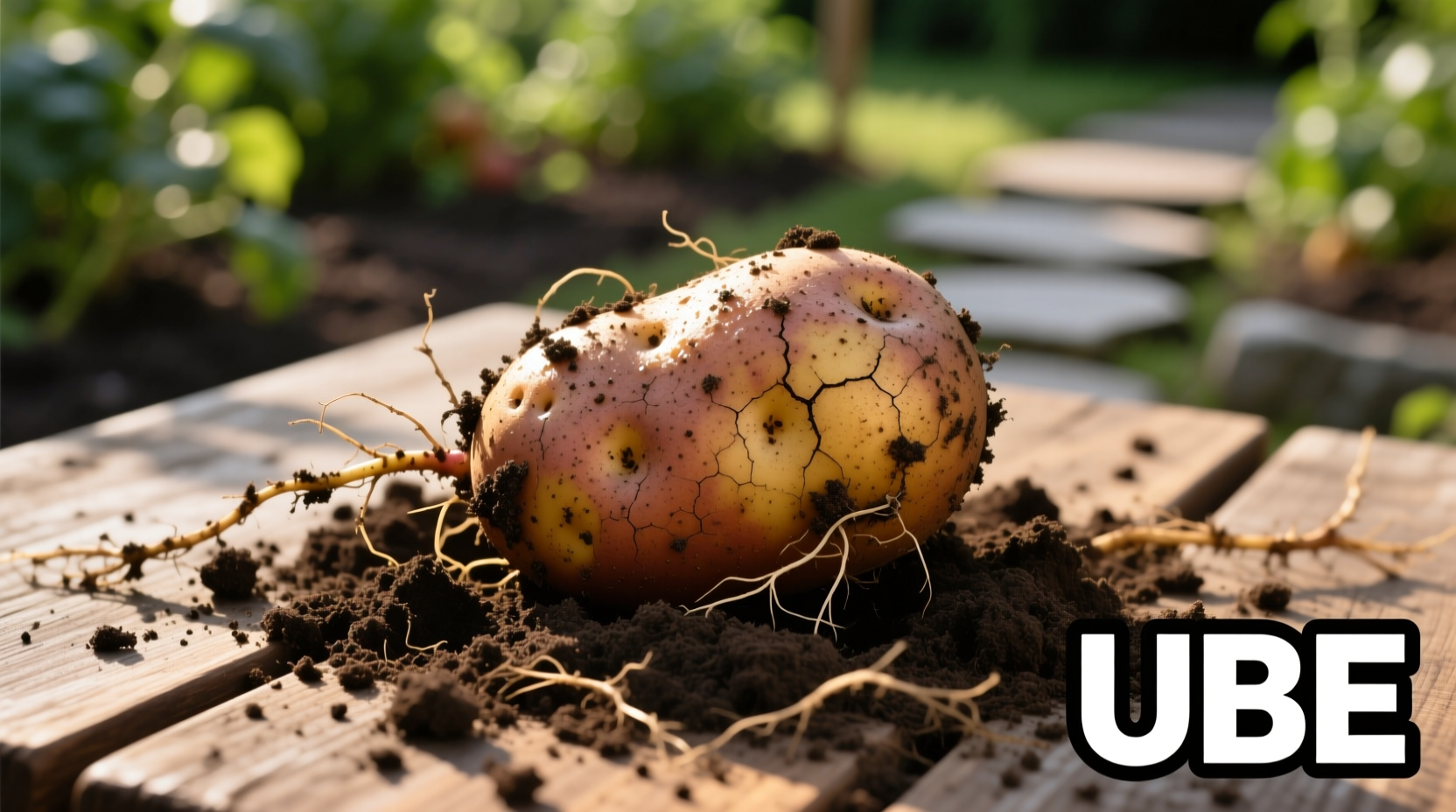Confused about ube versus potato? You're not alone. Many grocery shoppers and home cooks mistakenly believe ube is a purple variety of potato, but this vibrant tuber represents an entirely different species with unique properties. Understanding the distinction between ube and potatoes unlocks new culinary possibilities while honoring the cultural heritage of Southeast Asian cooking traditions.
Ube's Journey: From Ancient Staple to Global Sensation
Tracing ube's historical path reveals why this tuber earned its ‘purple royalty’ status across Pacific cultures. Unlike potatoes which originated in South America, ube has deep roots in Southeast Asian agricultural practices:
| Historical Period | Key Developments | Cultural Significance |
|---|---|---|
| Pre-1500s | Native cultivation across Philippines, Malaysia, Indonesia | Staple food source in Austronesian diets; featured in traditional ceremonies |
| 1500s-1800s | Spread through Pacific trade routes; introduced to Hawaii and Polynesia | Became integral to Hawaiian poi preparation; used in medicinal applications |
| 1900s | Commercial cultivation expanded in Philippines; scientific classification established | Recognized as national crop in Philippines; featured in traditional desserts like halo-halo |
| 2000s-Present | Global popularity surge; adaptation in Western baking and beverages | Maintains cultural identity while inspiring fusion cuisine worldwide |
According to research from the Food and Agriculture Organization of the United Nations, ube remains a critical food security crop across tropical regions due to its resilience in diverse soil conditions and nutritional density.
Nutritional Profile: Ube vs Potatoes Compared
While both serve as carbohydrate sources, ube and potatoes differ significantly in their nutritional composition. This comparison helps explain ube's growing popularity among health-conscious consumers:
| Nutrient (per 100g) | Ube (Purple Yam) | White Potato | Significance |
|---|---|---|---|
| Calories | 118 kcal | 77 kcal | Ube provides more sustained energy release |
| Dietary Fiber | 4.1g | 2.2g | Higher fiber supports digestive health |
| Vitamin C | 16.4mg (27% DV) | 19.7mg (33% DV) | Both excellent sources, potatoes slightly higher |
| Vitamin B6 | 0.2mg (12% DV) | 0.3mg (23% DV) | Important for metabolism and brain function |
| Potassium | 551mg (16% DV) | 421mg (12% DV) | Ube offers superior electrolyte balance support |
| Anthocyanins | High concentration | Negligible | Powerful antioxidants responsible for purple color |
Data sourced from the USDA FoodData Central database confirms ube's exceptional anthocyanin content, which provides significant antioxidant benefits not found in white potatoes. These compounds contribute to ube's distinctive purple hue while offering potential health benefits including reduced inflammation and improved cognitive function.

Practical Culinary Applications: Beyond the Hype
Understanding how to properly use ube separates authentic preparation from trendy imitations. Unlike potatoes which work well boiled or fried, ube requires specific handling techniques to maximize its unique qualities:
Traditional Preparation Methods
- Steaming over boiling: Preserves texture better than direct boiling which can make ube waterlogged
- Grating while warm: Essential for traditional Filipino desserts like ube halaya (jam)
- Natural coloring agent: Ube extract provides vibrant purple without artificial dyes
Modern Adaptations Worth Trying
- Smoothie booster: Adds creaminess and natural sweetness to breakfast drinks
- Baking substitute: Replace 25% of flour with ube powder in muffins for added nutrition
- Savory applications: Roasted ube pairs beautifully with coconut milk in Southeast Asian curries
Finding and Storing Authentic Ube
As ube gains popularity, distinguishing genuine products from artificially colored substitutes becomes crucial. Follow these guidelines for authentic ube experiences:
Shopping Tips
- Look for firm tubers with smooth skin and minimal blemishes
- Authentic ube has deep purple flesh throughout (not just near the skin)
- Beware of products labeled ‘ube flavor’ that use artificial coloring instead of real ube
Storage Guidelines
- Store uncut ube in cool, dark place for up to 3 weeks
- Refrigerate cooked ube in airtight container for 5-7 days
- Freeze pureed ube in ice cube trays for convenient future use
Authentic Ube Recipe Ideas for Home Cooks
Move beyond trendy ube lattes with these culturally respectful preparations that honor the ingredient's heritage:
Classic Ube Halaya (Purple Yam Jam)
This traditional Filipino dessert showcases ube's natural sweetness. Combine grated cooked ube with coconut milk, condensed milk, and butter. Cook slowly while stirring until thickened. Chill before serving with latik (coconut curds).
Ube Mashed ‘Potatoes’
A colorful twist on a classic side dish. Steam ube until tender, then mash with roasted garlic, a touch of coconut cream, and fresh thyme. The natural sweetness pairs beautifully with poultry or pork dishes.
Ube Breakfast Bowl
For a nutrient-dense morning meal, layer cooked ube cubes with Greek yogurt, chia seeds, and tropical fruit. Drizzle with a small amount of honey and sprinkle with toasted coconut flakes.
Common Misconceptions About Ube
As ube gains popularity, several myths have emerged that obscure its true nature and culinary potential:
- ‘Ube is genetically modified’ - False. The vibrant purple color comes naturally from anthocyanins, the same compounds found in blueberries and red cabbage
- ‘All purple sweet potatoes are ube’ - Incorrect. Okinawan sweet potatoes have similar color but different texture and flavor profile
- ‘Ube tastes exactly like taro’ - Not accurate. While both are tubers, ube has a distinct vanilla-like undertone absent in taro











 浙公网安备
33010002000092号
浙公网安备
33010002000092号 浙B2-20120091-4
浙B2-20120091-4